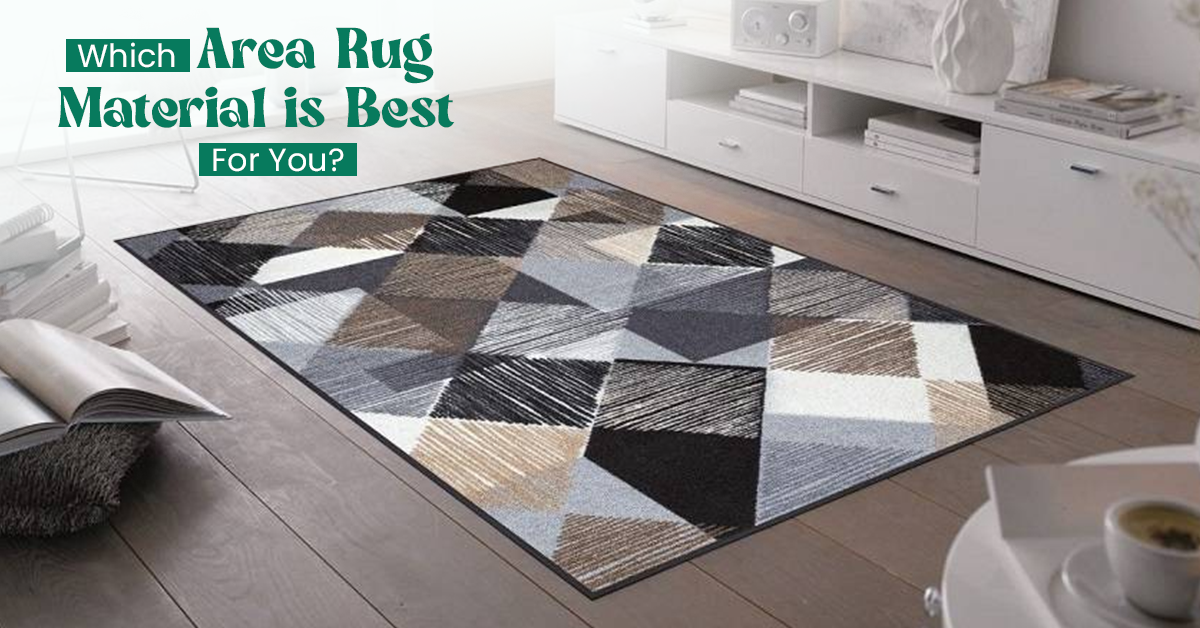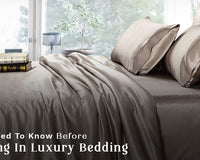When it comes to enhancing the aesthetic appeal of your living space, few elements can make as significant an impact as the choice of an area rug. From providing comfort underfoot to tying together the design elements of a room, the right rug can transform the ambiance of any space. However, with many available materials, choosing the perfect rug for your home can take time and effort.
This comprehensive guide delves into three popular rug materials' characteristics, pros, and cons: wool, silk, and synthetic fibres. By the end of this exploration, you'll be equipped with the knowledge to make an informed decision based on your preferences, lifestyle, and budget.
Wool Rugs

A. Natural Characteristics
Softness and Comfort
Wool rugs have long been prized for their exceptional softness and comfort. The natural fibers create a plush surface underfoot, making them ideal for areas where warmth and relaxation are sought, large beige rug such as bedrooms and living rooms.
Durability
One of the standout features of wool rugs is their durability. These rugs can withstand heavy foot traffic without losing shape or succumbing to wear and tear, making them a sensible investment for high-traffic areas in your home.
B. Pros of Wool Rugs
Insulation Properties
Wool's innate insulation properties make these rugs an excellent choice for maintaining a comfortable temperature in your living spaces. They help regulate room temperature by trapping heat during colder months and maintaining a relaxed atmosphere in warmer weather.
Resilience to Stains
Wool naturally repels moisture and stains, making it easier to clean spills before they become permanent. This quality is particularly beneficial for households with pets or young children.
C. Cons of Wool Rugs
Cost
While the benefits of wool rugs are undeniable, their quality comes at a price. Wool rugs are generally more expensive than other materials, which may influence your decision if you work within a tight budget.
Prone to Moth Damage
Wool, being a natural fibre, is susceptible to moth damage. It's essential to take preventive measures, such as regular cleaning and proper storage, to protect your wool rug from potential infestations.
Luxurious Silk Rugs

A. Unique Characteristics
Lustrous Appearance
Silk rugs are renowned for their luxurious and lustrous appearance. The natural sheen of silk fibres adds a touch of luxury to any room, making them an excellent choice for spaces where you want to create a sophisticated and glamorous atmosphere.
Smooth Texture
Silk rugs boast an irresistibly smooth texture that feels soft and gentle. This feature enhances the overall sensory experience, making silk rugs a delightful addition to your home.
B. Pros of Silk Rugs
Aesthetic Appeal
The primary allure of silk rugs lies in their aesthetic appeal. These rugs can elevate the style quotient of any room, serving as a focal point or complementing existing design elements.
Hypoallergenic
Silk is a hypoallergenic material, making silk rugs ideal for individuals with allergies or sensitivities. The fibres naturally repel common allergens, contributing to a healthier indoor environment.
C. Cons of Silk Rugs
High Maintenance
Silk rugs require delicate handling and regular maintenance to preserve their delicate fibres. They are more susceptible to damage from heavy foot traffic, direct sunlight, and spills, making them less practical for high-traffic areas.
Susceptible to Damage
Silk rugs are delicate and prone to damage, making them less suitable for households with active pets or young children. Scratches, pulls, and stains can significantly impact their longevity and appearance.
Synthetic Fibers: A Practical Option

A. Diverse Synthetic Materials
Nylon
Nylon rugs are known for their resilience and durability. These synthetic fibres offer excellent resistance to wear and tear, making them suitable for high-traffic areas.
Polyester
Polyester rugs are valued for their affordability and resistance to fading. These rugs are a practical choice for budget-conscious consumers who still want a polyester cream rug that looks and feels good.
B. Pros of Synthetic Fiber Rugs
Affordability
Synthetic fibre rugs are often more budget-friendly than natural materials like wool or silk. This makes them attractive for those looking to enhance their home decor without breaking the bank.
Resistance to Moisture
Synthetic fibres, mainly nylon, exhibit excellent resistance to moisture. This makes them suitable for areas prone to spills, such as dining rooms or kitchens, where quick and easy clean-up is essential.
C. Cons of Synthetic Fiber Rugs
Limited Lifespan
While synthetic fibre rugs offer affordability, they may have a shorter lifespan than natural materials. Over time, these rugs may show signs of wear and lose their original appearance.
Environmental Impact
Synthetic fibres often involve petrochemicals and may contribute to environmental concerns. If sustainability is a significant factor in your decision-making process, consider exploring eco-friendly alternatives.
Choosing a Rug Based on Lifestyle
A. Wool for Elegance and Durability
Wool rugs are an excellent choice if you prioritise elegance and durability. Consider them for spaces where comfort and longevity are crucial, such as living rooms and bedrooms.
B. Silk for Opulence and Low-Traffic Areas
Silk rugs create an opulent atmosphere in low-traffic areas like formal dining rooms or master bedrooms. Exercise caution in high-traffic spaces to avoid potential damage.
C. Synthetic Fibers for Affordability and Practicality
Synthetic fibre rugs are practical for those on a budget or seeking a low-maintenance option. Use them in areas where spills are likely to occur, such as dining rooms or playrooms.
Maintenance and Care Tips

A. Cleaning Wool Rugs
- Regularly vacuum your wool rug to remove dust and debris.
- Address spills promptly by blotting with a clean, dry cloth.
- Schedule professional cleaning every 12-18 months to maintain the rug's appearance and longevity.
B. Preserving Silk Rugs' Delicacy
- Avoid placing silk rugs in high-traffic areas.
- Rotate the rug periodically to ensure even wear.
- Clean silk rugs with mild detergent and gentle brushing to preserve their delicate fibres.
C. Easy Care for Synthetic Fiber Rugs
- Vacuum regularly to prevent dirt accumulation.
- Wipe spills with a damp cloth and mild detergent.
- Follow the manufacturer's guidelines for cleaning and maintenance.
Conclusion
Choosing the right area rug material involves careful consideration of your preferences, lifestyle, and budget. Whether you opt for the luxurious elegance of wool, the luxury of silk, or the practicality of synthetic fibres, each material offers unique characteristics to enhance your living space. By understanding the pros and cons of each option, you can make an informed decision that aligns with your home decor goals.
FAQs
Are wool rugs suitable for homes with pets?
Wool rugs can be a good choice for homes with pets due to their natural resistance to stains and spills. However, addressing any accidents promptly is essential to prevent long-term damage.
Can silk rugs be used in high-traffic areas?
Silk rugs are best suited for low-traffic areas to preserve their delicate fibres. Placing them in high-traffic zones like hallways or family rooms may lead to quicker wear and potential damage. Consider silk rugs for spaces where their aesthetic appeal can shine without the constant strain of heavy foot traffic.
Do synthetic fibre rugs contribute to environmental issues?
The production of synthetic fibres, particularly those derived from petrochemicals, can have environmental implications. If sustainability is a concern, explore eco-friendly alternatives like rugs made from recycled materials or natural fibres like jute or sisal.
How do I clean a synthetic fibre rug?
Cleaning synthetic fibre rugs is relatively straightforward. Vacuum regularly to prevent dirt accumulation, and for spills, use a damp cloth with a mild detergent. Follow the manufacturer's guidelines for specific care instructions, as different synthetic materials may have varying maintenance requirements.
Are there hypoallergenic options among synthetic fibre rugs?
While synthetic fibres are not inherently hypoallergenic, specific materials, like nylon, are less likely to harbour allergens. If allergies are a concern, opt for synthetic rugs with antimicrobial treatments or hypoallergenic ones.


